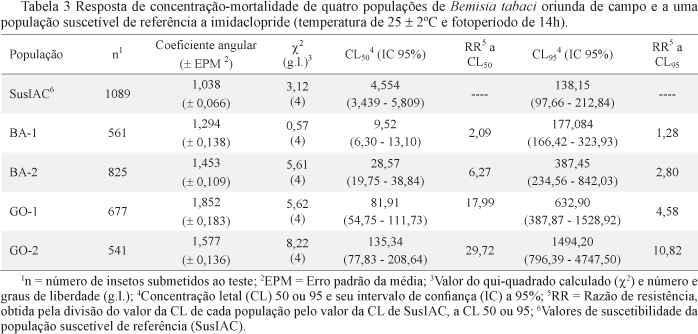Monitoring the susceptibility of a pest population to pesticides is essential for resistance management programs. The objective of this research was to evaluate the genetic variability in pesticide susceptibility in populations of Bemisia tabaci (Gennadius) collected from different Brazilian agricultural regions through the use of two different tests. Four whitefly populations, two from Goiás state (GO-1 and GO-2) e two from Bahia state (BA-1 and BA-2), were tested against a susceptible reference one (SusIAC). A residual contact bioassay was used to evaluate the pesticide susceptibility of each population by using diagnostic concentration bioassays and by estimating the baseline susceptibility data to each one of the tested insecticides, acetamiprid, imidacloprid, thiamethoxam, chlorpyrifos and endosulfan. Adult insects of unknown age and sex were tested. Evaluations were performed after 24h for endosulfan and 48h for the other chemicals. Both procedures showed significant differences in the susceptibility to the pesticides among B. tabaci populations. However, the discrimination among B. tabaci populations was more evident with the use of diagnosis tests. The population GO-2 was significantly less susceptible to the tested pesticides than SusIAC, mainly to neonicotinoids. The most critical resistance situation of B. tabaci was detected to thiamethoxam, followed by imidacloprid.
Whitefly; biotype B; baseline susceptibility; chemical control; monitoring resistance







